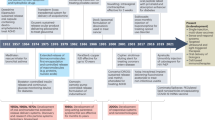Abstract
Design This was a non-blinded multiple-site randomised controlled clinical trial.
Case selection Children, aged 5-6 years, were recruited from 11 government-funded kindergartens (pre-schools) in Selangor, Malaysia. The kindergartens were randomly allocated to either the Intervention Group (n = 185 children) or the Control Group (n = 142 children). A clinical examination was conducted to determine the participants' baseline caries experience. Over a 24-month period (commencing in 2015), the Intervention Group received six -monthly dental home visits (DHVs) to provide the families with oral hygiene and dietary instruction, along with educational leaflets. The Control Group received only the educational leaflets. Caries incidence was measured in terms of both the proportion of children who developed new carious lesions, and the number of primary molars in which new carious lesions were seen at 24 months.
Data analysis A chi-squared test was used to compare baseline socioeconomic characteristics as well as the proportion of children in each arm who developed new carious lesions. A t-test was used to compare the mean number of primary molars that developed new caries in each group. In addition, the number needed to treat (NNT) was determined.
Results There was a 70% (n = 132) and 71% (n = 100) completion rate for participants in the Intervention and Control Groups, respectively. At 24 months, the key finding was that significantly fewer children in the Intervention Group (14.4%; n = 19) had developed new caries lesions compared to the Control Group (60%; n = 60) (p = 0.001). The NNT was calculated as 2.2, to prevent new caries in one child. After controlling for parental education level and household crowding, children in the Control Group were 8.2 times more likely to develop caries in their primary molars than those in the Intervention Group.
Conclusions The authors concluded that in a middle-income country such as Malaysia, six -monthly dental home visits are an effective caries prevention strategy for children aged 5-6 years old from low-income families.
This is a preview of subscription content, access via your institution
Access options
Subscribe to this journal
Receive 4 print issues and online access
$259.00 per year
only $64.75 per issue
Buy this article
- Purchase on Springer Link
- Instant access to full article PDF
Prices may be subject to local taxes which are calculated during checkout
Similar content being viewed by others
References
Kazeminia M, Abdi A, Shohaimi S et al. Dental caries in primary and permanent teeth in children's worldwide, 1995 to 2019: a systematic review and meta-analysis. Head Face Med 2020; 16: 22.
Plonka K A, Pukallus M L, Barnett A, Holcombe T F, Walsh L J, Seow W K. A controlled, longitudinal study of home visits compared to telephone contacts to prevent early childhood caries. Int J Paediatr Dent 2013; 23: 23-31.
Kowash M B, Pinfield A, Smith J, Curzon M E J. Effectiveness on oral health of a long-term health education programme for mothers with young children. Br Dent J 2000; 188: 201-205.
Henshaw M M, Borrelli B, Gregorich S E et al. Randomized trial of motivational interviewing to prevent early childhood caries in public housing. JDR Clin Transl Res 2018; 3: 353-365.
Author information
Authors and Affiliations
Ethics declarations
The authors declare no conflicts of interest.
Rights and permissions
About this article
Cite this article
Baughan, S., Rodd, H. Can dental home visits really reduce caries incidence in pre-school children?. Evid Based Dent 23, 64–65 (2022). https://doi.org/10.1038/s41432-022-0268-5
Received:
Accepted:
Published:
Issue Date:
DOI: https://doi.org/10.1038/s41432-022-0268-5



